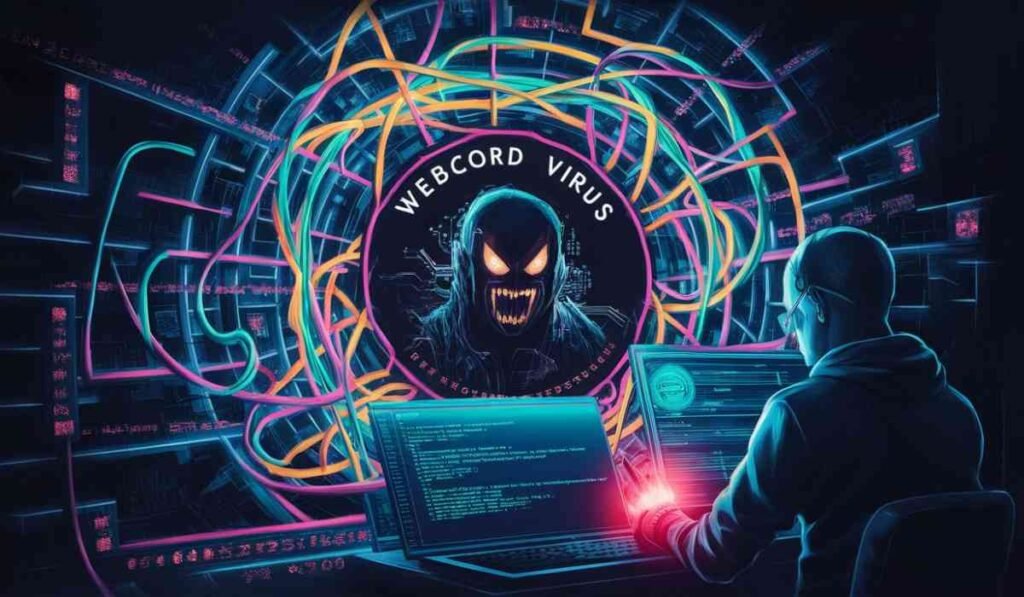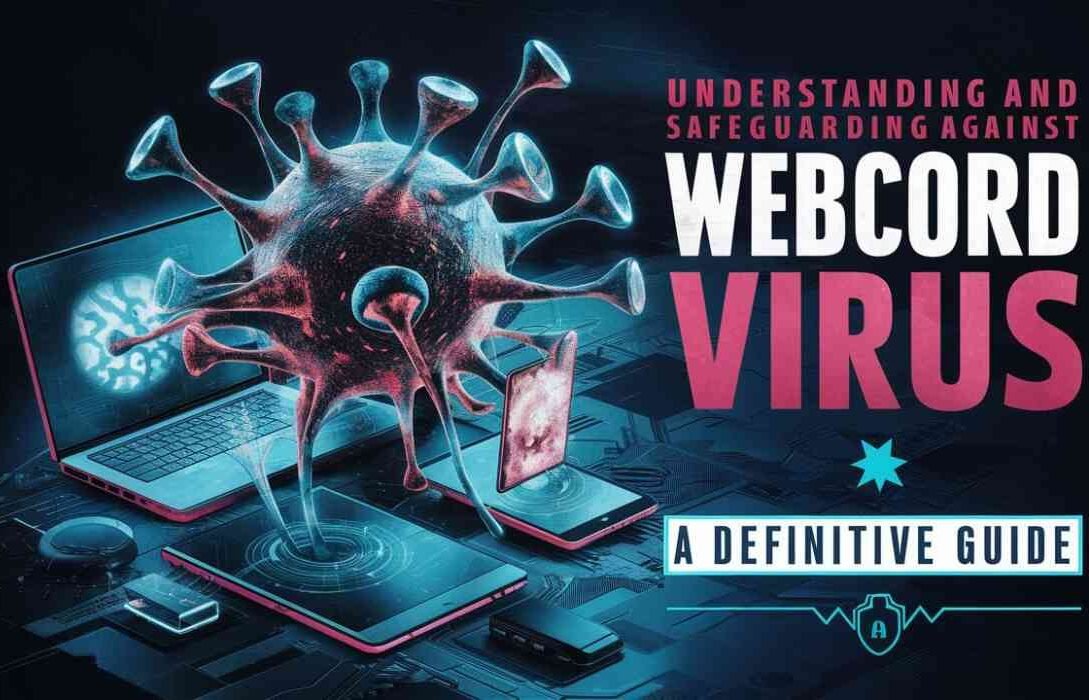Table of Contents
In today’s digital landscape, where cyber threats loom large, the emergence of new malware poses a constant challenge to cybersecurity professionals worldwide.
Among these threats, the WebCord Virus has garnered attention for its sophisticated tactics and significant impact on both individuals and organizations.
This comprehensive guide aims to delve into the intricacies of the WebCord Virus, offering insights into its nature, propagation, detection, and mitigation strategies.
Drawing from authoritative sources and expert opinions,
This article provides a holistic understanding of the threat posed by the WebCord Virus and equips readers with actionable measures to enhance their cybersecurity posture.
What Is The WebCord Virus?
The WebCord Virus represents a new breed of malware designed to infiltrate systems stealthily and cause havoc undetected.
Unlike conventional threats, the WebCord Virus exhibits advanced evasion techniques, making it challenging to detect and mitigate using traditional antivirus measures.
Its modus operandi includes stealthy installation, data theft, and system compromise, posing significant risks to both individuals and businesses.
Understanding The Threat Landscape

The emergence of the WebCord Virus underscores the evolving nature of cyber threats and the need for adaptive cybersecurity measures.
With its ability to exploit both human vulnerabilities and technological loopholes,
The WebCord Virus exemplifies the sophistication of modern malware and the urgency for enhanced defense mechanisms.
Propagation Strategies And Impact
The WebCord Virus employs multifaceted propagation strategies, including phishing schemes and exploitation of software vulnerabilities.
By leveraging human psychology and exploiting unpatched software, the virus spreads rapidly across networks,
Posing grave consequences for infected individuals and organizations alike.
Symptoms of infection range from minor system disruptions to significant financial losses and data breaches,
Highlighting the severity of the threat posed by the WebCord Virus.
Detection And Analysis

Detecting and analyzing the WebCord Virus require a combination of cutting-edge technology and cybersecurity expertise.
Next-generation antivirus software equipped with machine learning algorithms and behavioral analysis tools plays a crucial role in identifying subtle indicators of infection.
Additionally, sandboxing techniques and forensic investigations aid in understanding the virus’s behavior and origin, paving the way for effective mitigation strategies.
Removal And Recovery

Combatting the WebCord Virus necessitates a systematic approach to removal and recovery.
Isolating infected devices, employing reliable antivirus solutions, and implementing data recovery measures are essential steps in mitigating the impact of the virus.
Furthermore, proactive security measures, including software updates and user education,
Are critical in preventing future infections and strengthening overall cybersecurity resilience.
Future Trends And Recommendations
Looking ahead, the threat landscape is expected to evolve further, with cybercriminals adopting increasingly sophisticated tactics.
To stay ahead of emerging threats like the WebCord Virus, organizations must prioritize ongoing education, collaboration, and innovation in cybersecurity practices.
By fostering a culture of vigilance and readiness, businesses can mitigate the risks posed by cyber threats and safeguard their digital assets effectively.
Conclusion
In conclusion, the WebCord Virus represents a formidable challenge in the realm of cybersecurity,
Demanding proactive measures and collaborative efforts to mitigate its impact effectively.
By understanding the intricacies of the threat landscape, adopting robust defense mechanisms, and staying abreast of emerging trends,
Individuals and organizations can fortify their defenses against malware like the WebCord Virus and ensure a secure digital environment for all.
FAQs
What is the WebCord Virus, and why is it considered a significant cybersecurity threat?
The WebCord Virus is a sophisticated malware that poses significant risks due to its advanced evasion techniques and ability to cause substantial harm to individuals and organizations.
How does the WebCord Virus spread, and what makes its propagation strategy particularly dangerous?
The WebCord Virus spreads through phishing schemes and software vulnerabilities, exploiting human vulnerabilities and technological weaknesses to propagate rapidly and stealthily.
What are the symptoms and potential impact of a WebCord Virus infection on individuals and organizations?
Symptoms of a WebCord Virus infection range from minor system disruptions to significant financial losses and data breaches, posing grave consequences for both individuals and organizations.
How can the WebCord Virus be detected and analyzed by cybersecurity experts?
Detection and analysis of the WebCord Virus require advanced technology and cybersecurity expertise, including next-generation antivirus software, sandboxing techniques, and forensic investigations.
How does the WebCord Virus utilize encrypted channels for communication, and why does this make it more challenging to detect?
The WebCord Virus employs encrypted channels to communicate with its command and control servers, making its network traffic appear innocuous and evading detection by traditional security measures. This stealthy communication method enhances the virus’s ability to propagate undetected, posing significant challenges for cybersecurity professionals.
What techniques does the WebCord Virus use to modify its code and behavior, and how does this contribute to its ability to evade antivirus detection?
The WebCord Virus utilizes sophisticated techniques to modify its code and behavior dynamically, thereby thwarting antivirus detection efforts. By constantly adapting its tactics, the virus can evade signature-based detection methods employed by traditional antivirus solutions, posing a persistent challenge to cybersecurity defenses.
What role does machine learning play in next-generation antivirus software, and how does it enhance detection capabilities against threats like the WebCord Virus?
Next-generation antivirus software leverages machine learning algorithms to analyze patterns and behaviors indicative of malware, enabling more accurate and proactive threat detection. By learning from past incidents and continuously refining detection algorithms, these solutions can effectively identify and mitigate emerging threats like the WebCord Virus.
How do cybersecurity professionals conduct forensic investigations to determine the origin and extent of a WebCord Virus infection, and what insights can be gained from these investigations?
Forensic investigations play a crucial role in understanding the origin and impact of a WebCord Virus infection.
By analyzing digital evidence and tracing the virus’s propagation pathways, cybersecurity professionals can uncover valuable insights into the tactics and motivations of threat actors behind the attack.
This information is instrumental in developing targeted mitigation strategies and improving overall cybersecurity resilience.
What proactive measures can individuals and organizations take to enhance their cybersecurity posture and mitigate the risks posed by threats like the WebCord Virus?
In addition to reactive measures such as antivirus software and data recovery protocols, proactive cybersecurity measures are essential for mitigating the risks posed by threats like the WebCord Virus.
These measures may include regular security awareness training for employees,
Implementation of robust access controls and network segmentation, and adoption of security best practices such as multi-factor authentication and encryption.
By prioritizing prevention and preparedness, individuals and organizations can reduce their susceptibility to cyber threats and minimize the potential impact of security incidents.
What steps are involved in the removal and recovery process after a WebCord Virus infection?
Removal and recovery from a WebCord Virus infection entail systematic isolation of infected devices, deployment of reliable antivirus solutions,
And implementation of data recovery measures, alongside proactive security measures to prevent future infections.











